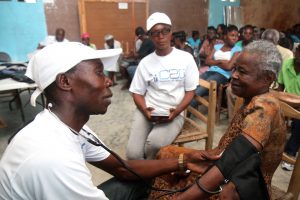According to the WHO, noncommunicable diseases (NCD), primarily cardiovascular diseases, cancers, chronic respiratory diseases and diabetes, are responsible for 63% of all deaths worldwide. 80% of NCD deaths occur in low- and middle-income countries. While the mortality rate remains high, NCDs are preventable through effective interventions that tackle shared risk factors.
Peter Piot, Director of the London School of Hygiene & Tropical Medicine and Trustee of the Novartis Foundation, recently wrote:
“Health systems in [developing countries] are ill-equipped to address this emergency. They are stretched under the pressure of fighting infectious diseases like malaria and tuberculosis, which still make up a majority of deaths in much of the developing world. It will take decades before sufficient health coverage is achieved that can adequately address the scale of the NCD epidemic. We need a new approach hks1njv.
We can draw some useful lessons from how HIV/AIDS patients were empowered to manage their condition. AIDS was the first experience of managing a ‘chronic’ condition that many low-and middle-income countries had. With the introduction of antiretroviral therapy from the mid-1990s the life expectancy of many AIDS patients increased. Many were able to return to their lives and families instead of being hospital-bound.
Faced with the prospect of having to care for these patients for potentially a very long time, public health systems mobilised to empower AIDS patients to self-manage their condition with appropriate support from their physicians. This shift to a patient-centered approach – taking chronic care outside of the formal healthcare system and hospitals, and into the community and families – has eased the burden of tackling the epidemic and led to precious resources reaching more people.”
This is where innovation in healthcare can contribute to solving the NCD problem. C2C has developed a health care delivery system that is built around patients. Our patient-centered care model is often the point-of-entry to the care system for vulnerable people and families. We respond to local health needs by drawing on communication between the community and the clinic. At C2C, we believe that this approach is fundamental to effective primary care as we help Haitian families get well and stay healthy.

